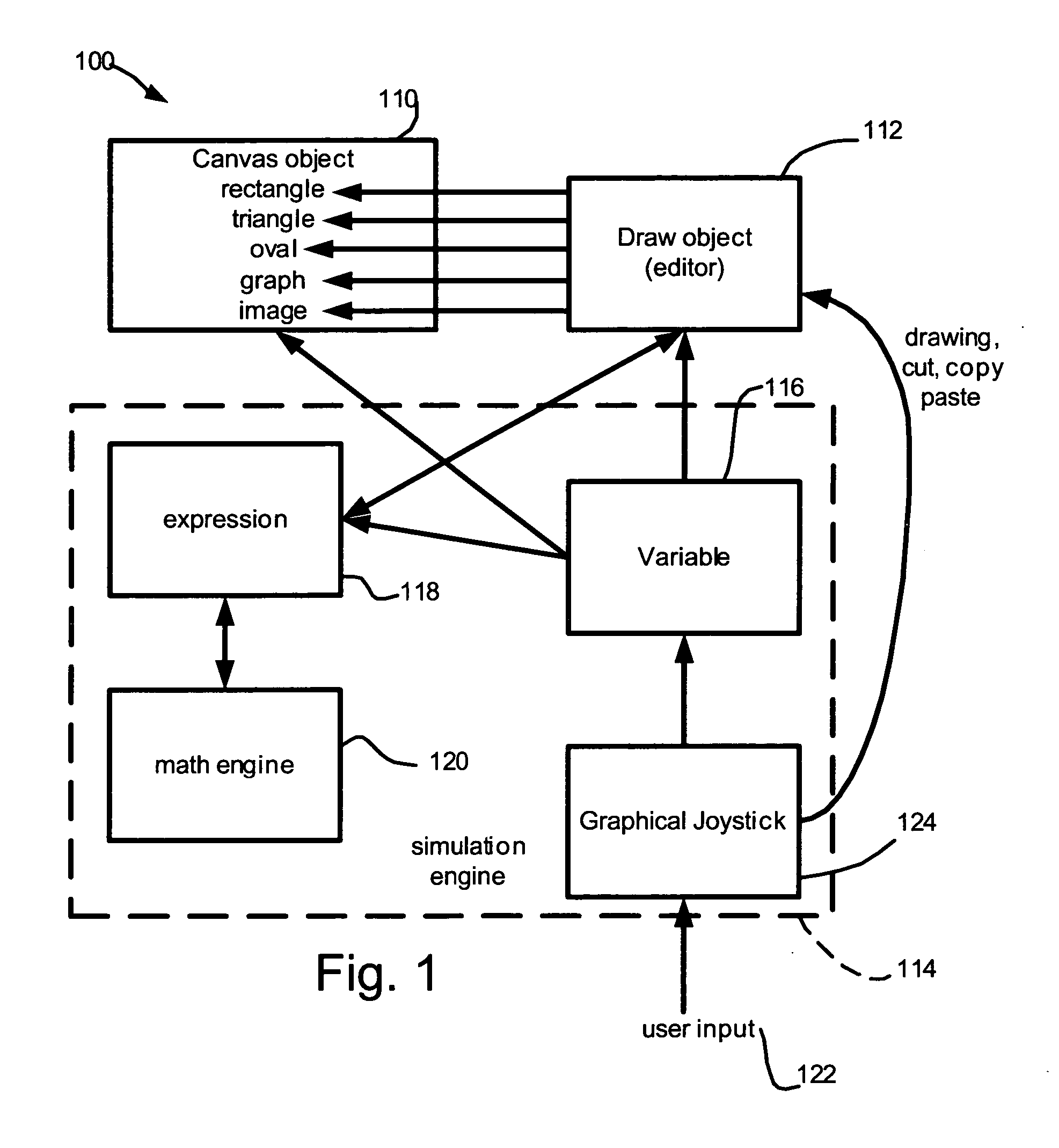Computerized system and method for visually based education
a visual and educational technology, applied in the field of visual education computerized systems, can solve the problems of not being able to help students comprehend the dynamic nature of many concepts, not being able to change the instructional process much, and powerpoint, as similar presentation software, being limited to the creation of static slides
- Summary
- Abstract
- Description
- Claims
- Application Information
AI Technical Summary
Benefits of technology
Problems solved by technology
Method used
Image
Examples
Embodiment Construction
[0029] The present invention is a computer based system. As such, it consists of a set of computer instructions, stored as a program in a computer memory and executable on a computer processor. They system can be implemented on any type of computer, including a personal computer, mainframe computer, laptop computer, or other computing device. In a preferred embodiment, the invention is implemented on a computer network comprising a server computer and a client computer, operable in known manners. The program and data are stored on the server computer. The program operates on the client system to provide the functionality of the system and the displayed images as discussed below. According to an embodiment of the invention, the system is implemented on a server computer connected to global network, such as the Internet. A client computer, having a browser program can access the educational system program of the present invention on the server computer for execution at a remote locati...
PUM
 Login to View More
Login to View More Abstract
Description
Claims
Application Information
 Login to View More
Login to View More - R&D
- Intellectual Property
- Life Sciences
- Materials
- Tech Scout
- Unparalleled Data Quality
- Higher Quality Content
- 60% Fewer Hallucinations
Browse by: Latest US Patents, China's latest patents, Technical Efficacy Thesaurus, Application Domain, Technology Topic, Popular Technical Reports.
© 2025 PatSnap. All rights reserved.Legal|Privacy policy|Modern Slavery Act Transparency Statement|Sitemap|About US| Contact US: help@patsnap.com



